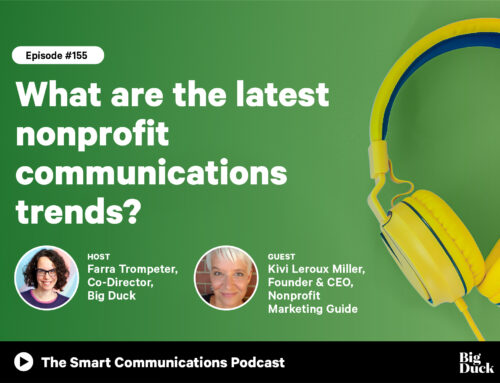 M+R and NTEN released The 2014 Nonprofit Benchmarks Study earlier this week.
M+R and NTEN released The 2014 Nonprofit Benchmarks Study earlier this week.
In its eighth year, the study analyzes the data that matters most to nonprofit online programs. Its goal is to set benchmarks that help nonprofits measure their online performance, track progress, and guide strategy to help create more effective fundraising and advocacy.
The report is based on the study of 53 of the country’s leading (and large) nonprofits including UNICEF, Sierra Club, Planned Parenthood, AARP, Feeding America and the Human Rights Campaign. They looked at over 2 billion email messages sent to over 41 million list subscribers; more than $324 million of online donations from over 5.6 million online gifts; and 7.5 million advocacy actions.
And as with any benchmarks report, there is good news and bad news.
Good News
- Email lists are still growing – up 14% over 2012 levels
- Monthly website traffic for the nonprofits in the study was up 16% in 2013
- Online giving among study participants increased 14% over 2012 totals, and monthly giving revenue accounted for 16% of total online giving
- Social media audiences continue to grow at a much faster rate than email or website traffic. (Nonprofits in the study grew their number of Facebook fans by 37%, and Twitter followers by 46%.)
Bad News
- Email open rates were down 4% from 2012 to a 13% overall open rate
- Click-through rates for email fundraising messages were down 13% from 2012
- For fundraising messages, response rates were down 11% from 2012 levels to 0.07%
- Advocacy message response rates declined 25% to 2.0%
But don’t start chanting “Email is dead!” quite yet (Seriously, don’t do that.) As the study points out, since email lists continue to grow, email still accounts for about a third of online fundraising revenue.
The study also points out, “Email metrics don’t capture the full picture of how email subscribers give online. Analysis of a handful of M+R clients shows that email subscribers may donate up to two to three times more revenue online through non-email channels (driven by search, social media, or just going straight to a nonprofit’s website).”
Other Interesting Tidbits
“Across the full study, we saw a strong positive correlation between advocacy message volume and email response rates: the more advocacy messages groups sent, the higher their advocacy response rates tended to be.”
“For every 1,000 email subscribers, study participants had an average of 199 Facebook fans and 110 Twitter followers.”
“The average number of fundraising messages per subscriber sent in December 2013 was just about 7. No other month reached even half that volume. Overall, supporters did not respond at a higher rate to fundraising messages in December than at any other time of year.”
“We found a negative correlation between email volume and the overall email unsubscribe rate. That is, as nonprofits send more email messages, their unsubscribe rates go down. It’s a bit counterintuitive, but it shows that high message volume doesn’t necessarily lead to mass abandonment of an email list.”
(Emphasis ours)
Remember, while reports like these are important for spotting overall trends and establishing a jumping-off point for measuring metrics, your organization could be experiencing completely different results. The report points out that some of the results varied based on the type of organization as well. These are all huge organizations, compared to many Nonprofit Marketing Guide readers, so keep that in mind too!
We encourage you to download the full report.






